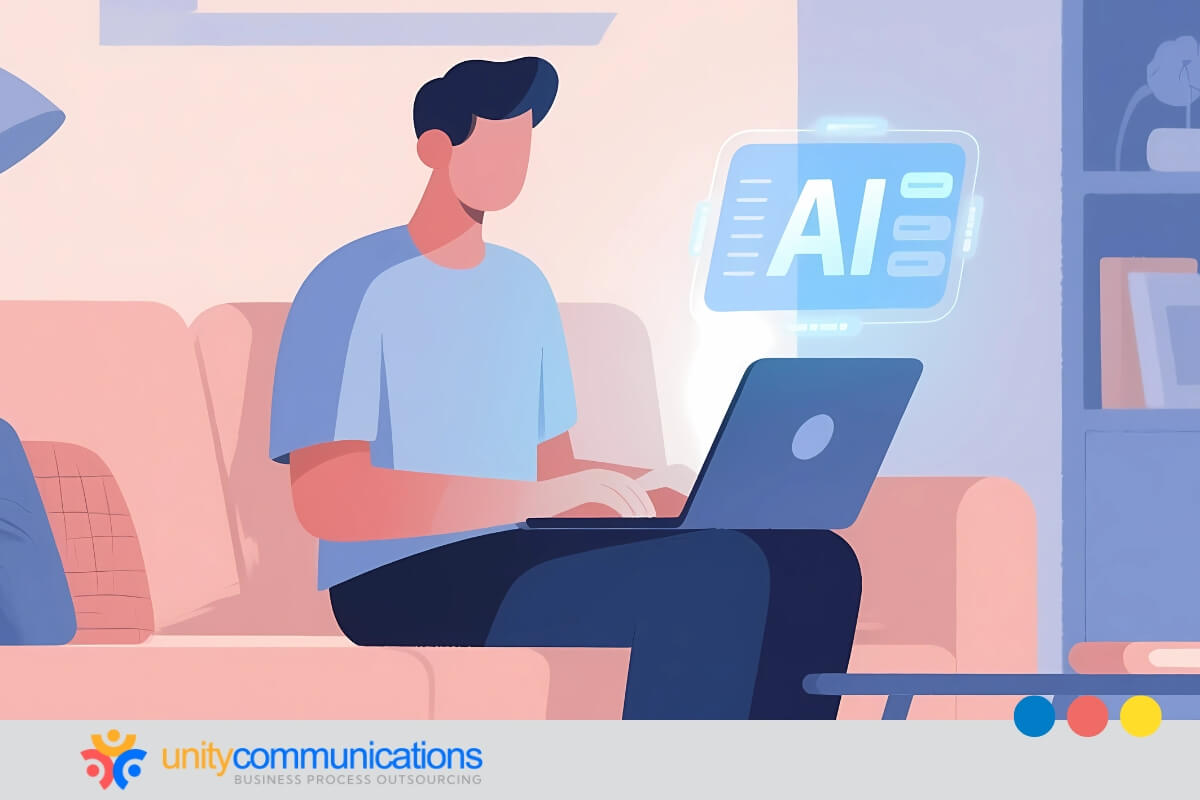Table of Contents
Artificial intelligence (AI) might seem like a modern innovation, but its origins stretch much further back than most people realize. While AI only entered the mainstream in the past decade, its conceptual and technical foundations were laid long before computers became everyday tools.
This raises the central question: what was the first AI ever created? In this article, we’ll trace its evolution, from early concepts to the first programs that brought the technology to life. We’ll explore why understanding this history matters for businesses navigating today’s AI landscape.
What was the first AI?

Before we can answer the question of what the first AI was, it’s important to define AI. Artificial intelligence refers to the ability of machines or computer programs to perform tasks that typically require human intelligence, such as reasoning, problem-solving, or understanding language.
The definition of AI has evolved:
- In the 1950s, simply programming a machine to solve a logic problem or simulate a conversation counted as AI.
- Today, expectations are far higher. AI now encompasses complex neural networks, predictive analytics, and adaptive learning.
Because the definition has shifted, historians and computer scientists still debate which system truly deserves the title of the “first AI.” Some argue it was the Logic Theorist (1956), a program that could prove mathematical theorems. Others point to ELIZA (1966), which simulated natural conversation.
Each represented an AI milestone in its own right. Together, they illustrate why the question of what the first AI was remains open to interpretation rather than a single, definitive answer.
The intellectual foundations: From Turing to Dartmouth
Long before the creation of the first AI programs, thinkers were already asking whether machines could “think.”
In 1950, mathematician Alan Turing published his landmark paper, “Computing Machinery and Intelligence,” which introduced the concept of the Turing Test. It is a method for assessing whether a machine’s behavior can convincingly imitate human intelligence. This was not AI in practice, but it was one of the first serious attempts to define what AI is and how it might be tested.
Just a few years later, in 1956, a group of researchers gathered at the Dartmouth Conference, which is widely considered the birthplace of AI as a field of study. It was here that the term “artificial intelligence” was officially coined. The conference brought together pioneers who believed machines could eventually perform tasks requiring human reasoning, including:
- John McCarthy, who coined the term “artificial intelligence”
- Marvin Minsky, co-founder of MIT’s AI laboratory
- Allen Newell, co-creator of the Logic Theorist
- Herbert A. Simon, co-creator of the Logic Theorist
These early ideas created the intellectual foundation for answering the question of what the first AI was. With the field now defined and researchers aligned on the goal of simulating human intelligence, the stage was set. Within months, Newell and Simon would debut the Logic Theorist, transforming theoretical concepts into working code.
The Logic Theorist: The program that started it all
Once the field of AI had been formally defined, the next step was to put theory into practice. That opportunity came in 1955–56, when Allen Newell and Herbert A. Simon developed The Logic Theorist at the RAND Corporation. It is widely recognized as the first true AI program capable of replicating human reasoning in mathematics.
The Logic Theorist’s primary achievement was its ability to prove theorems from “Principia Mathematica,” a seminal text in mathematical logic. Instead of relying on rigid, preprogrammed solutions, it could search for proofs on its own, sometimes even finding simpler, more elegant solutions than those created by human mathematicians.
The leap in autonomous problem-solving made it a landmark answer to the question of what the first AI was. Beyond its technical results, the Logic Theorist was groundbreaking because it demonstrated that computers could perform tasks beyond simply crunching numbers. They could engage in symbolic reasoning, a fundamental aspect of human intelligence.
Its success gave momentum to the emerging AI community and inspired future projects in symbolic AI, expert systems, and ultimately the diverse approaches seen in modern machine learning (ML).
How the Logic Theorist shaped modern AI

The Logic Theorist revolutionized the way researchers viewed machines and intelligence. By showing that a computer could perform tasks involving symbolic reasoning, it validated the idea that human-like thought processes could be simulated in software.
This achievement significantly influenced the development of symbolic AI, where machines utilize rules and symbols to represent knowledge and solve problems. For decades, symbolic approaches dominated research, giving rise to expert systems in the 1970s and 1980s that could provide:
- Medical diagnoses based on symptom analysis
- Financial analysis and advice using rule-based decision trees
- Technical troubleshooting through logical deduction
All these were direct descendants of the reasoning methods pioneered by the Logic Theorist. Equally important, the program sparked debate about what should be considered “intelligence” in a machine. Could reasoning alone define it? Or would true AI require learning, perception, and adaptability?
These questions set the stage for the next era of AI research, leading eventually to the ML and neural network techniques that dominate today. The Logic Theorist laid the foundation of an entire field of study. It influenced the trajectory of research and the way society understands what artificial intelligence can and should be.
From theorem prover to AI agents: The evolution continues
The Logic Theorist marked the beginning of a journey that continues to influence technology today. Its success inspired decades of innovation, including symbolic AI and expert systems, and ultimately the data-driven models that define modern artificial intelligence.
Each breakthrough was built on the principle that machines could go beyond calculation and engage in reasoning, problem-solving, and even communication. AI agents that power customer support, automate workflows, or assist with complex decision-making are the direct descendants of those early experiments.
Unlike the rigid symbolic systems of the past, AI agents can now learn from data, adapt to new inputs, and act autonomously in dynamic environments. The global AI agent market reflects this evolution. Valued at $5.4 billion in 2024, it’s projected to reach $50.3 billion by 2030, representing compound annual growth of 45.8%.
The legacy of early AI is technical and conceptual. It disrupted our understanding of intelligence itself, raising questions about the boundaries between humans and machines. The pioneering efforts of the 1950s proved that intelligence could be modeled, studied, and built into software. It set in motion the advances that have led us to today’s AI-powered world.
AI in business today: From theory to practical application

AI is now far beyond the capabilities of theorem-proving programs. Nowadays, AI powers everyday tools such as recommendation engines, digital assistants, fraud detection systems, and predictive analytics. By 2028, 33% of enterprise software applications will include agentic AI features as standard, reflecting the deep integration of these capabilities into the tools we already use.
To understand the business implications, it’s worth looking at how outsourcing works today. For many companies, the challenge is integrating AI effectively with human expertise. When you partner AI with outsourcing, it becomes more powerful.
In a hybrid business process outsourcing (BPO) model, AI agents manage repetitive, high-volume tasks, while human reps handle exceptions, complex decision-making, and customer interactions that require empathy. Hybrid BPO blends the efficiency of AI with the judgment and flexibility of human talent.
The bottom line
What was the first AI? Some might claim it’s Logic Theorist. In reality, from the first experiments of the 1950s to today’s autonomous agents, AI has traveled an extraordinary path. What began with symbolic reasoning in programs has evolved into generative models, adaptive systems, and enterprise-ready AI embedded in everyday tools.
What comes next? While no one can predict the future of AI with certainty, experts agree on several clear trends: broader business adoption, workforce transformation as automation reshapes roles, and the continued rise of agentic AI capable of greater independence.
Many companies struggle to integrate AI effectively into their operations. A hybrid BPO partner such as Unity Communications provides the human oversight and operational expertise you need to thrive in this new era. Let’s connect and explore how we can help guide your AI adoption.




